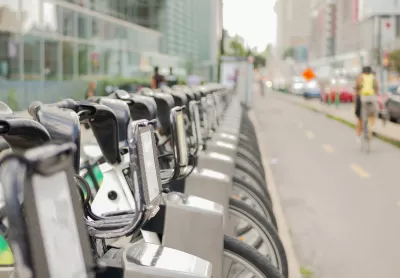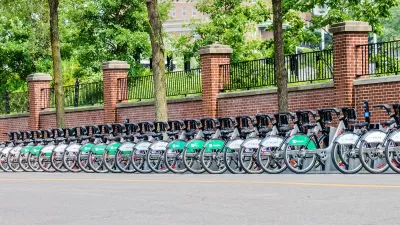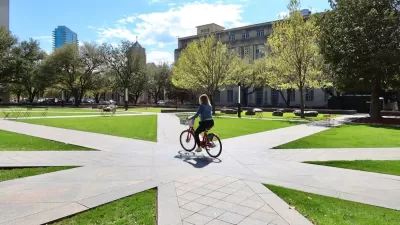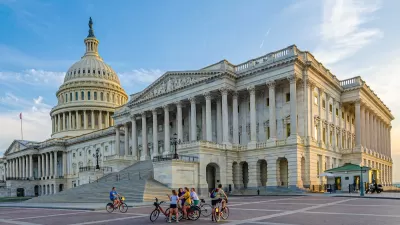A combination of infrastructure, connectivity, and quality equipment has made the Canadian city’s bike share system successful despite frigid winters and challenging geography.

With the average daily February temperature at 26 degrees Fahrenheit, how did Montreal become a city of cyclists? A piece by Ben Abramson in Strong Towns investigates.
Montreal’s bikeshare program, called BIXI, has grown exponentially since launching in 2009. With over 10,000 bikes, it has the largest fleet in Canada and one of the largest in North America. BIXI has a user base of more than 500,000 riders, who took almost 12 million trips in 2023, more than double the 5.8 million in (pre-COVID) 2019.
The system added winter service this year. Abramson writes that the city set up the bike share system for success in a number of ways. “On the product side, it was important to launch with high-quality cycles, a well-designed network, and a pricing structure that riders are comfortable with.”
The system is also well integrated with local public transit and other transportation infrastructure. “But most important of all is making the network available where users live and travel between.” The system uses fixed stations scattered throughout the region, not just in central Montreal, providing a broad network that avoids the issues faced by dockless devices.
FULL STORY: How a Cold, Hilly Canadian City Became a Year-Round Cycling Success Story

Study: Maui’s Plan to Convert Vacation Rentals to Long-Term Housing Could Cause Nearly $1 Billion Economic Loss
The plan would reduce visitor accommodation by 25,% resulting in 1,900 jobs lost.

North Texas Transit Leaders Tout Benefits of TOD for Growing Region
At a summit focused on transit-oriented development, policymakers discussed how North Texas’ expanded light rail system can serve as a tool for economic growth.

Why Should We Subsidize Public Transportation?
Many public transit agencies face financial stress due to rising costs, declining fare revenue, and declining subsidies. Transit advocates must provide a strong business case for increasing public transit funding.

How to Make US Trains Faster
Changes to boarding platforms and a switch to electric trains could improve U.S. passenger rail service without the added cost of high-speed rail.

Columbia’s Revitalized ‘Loop’ Is a Hub for Local Entrepreneurs
A focus on small businesses is helping a commercial corridor in Columbia, Missouri thrive.

Invasive Insect Threatens Minnesota’s Ash Forests
The Emerald Ash Borer is a rapidly spreading invasive pest threatening Minnesota’s ash trees, and homeowners are encouraged to plant diverse replacement species, avoid moving ash firewood, and monitor for signs of infestation.
Urban Design for Planners 1: Software Tools
This six-course series explores essential urban design concepts using open source software and equips planners with the tools they need to participate fully in the urban design process.
Planning for Universal Design
Learn the tools for implementing Universal Design in planning regulations.
City of Santa Clarita
Ascent Environmental
Institute for Housing and Urban Development Studies (IHS)
City of Grandview
Harvard GSD Executive Education
Toledo-Lucas County Plan Commissions
Salt Lake City
NYU Wagner Graduate School of Public Service





























